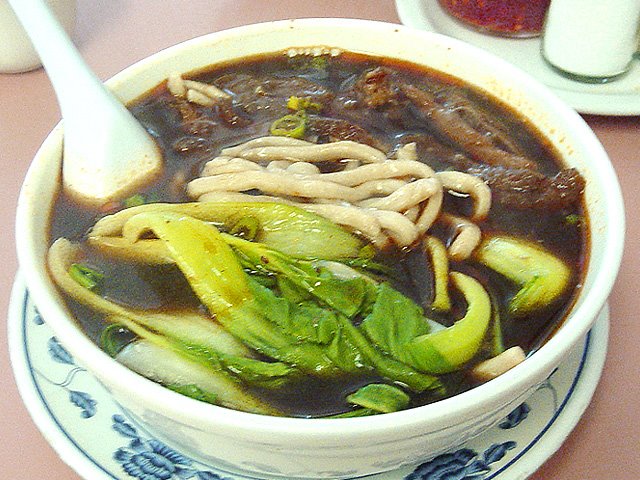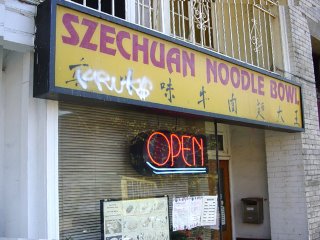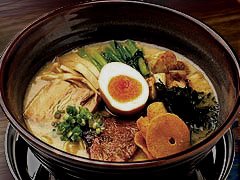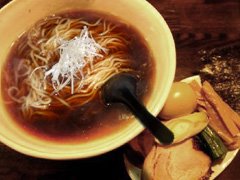博多ラーメン Hakata Ramen
 Kyushu style ramen, or more specifically, Hakata style ramen, is one of the three major regional varieties of Japanese ramen (the other two are from Hokkaido and Kitakata). Ramen from the Kyushu area is dominated by the tonkotsu soup based ramen which originated from the Hakata area of Fukuoka city.
Kyushu style ramen, or more specifically, Hakata style ramen, is one of the three major regional varieties of Japanese ramen (the other two are from Hokkaido and Kitakata). Ramen from the Kyushu area is dominated by the tonkotsu soup based ramen which originated from the Hakata area of Fukuoka city.Ramen from the Hakata area in Fukuoka city are famous for its rich, white tonkotsu soup which is created from cooking pork bone at high heat for many hours. The noodles used are often thin, straight ramen noodles. Common toppings include cha-shu pork, dried seaweed, beni-shoga (pickled ginger), and takana (pickled vegetables).
 ★★★★ 一風堂 (Ippuudou) - Tokyo
★★★★ 一風堂 (Ippuudou) - Tokyo ★★★ 一蘭 (Ichi-ran) - Tokyo
★★★ 一蘭 (Ichi-ran) - Tokyo ★★★ なんでんかんでん (Nanden-Kanden) - Tokyo
★★★ なんでんかんでん (Nanden-Kanden) - Tokyo ★★★ ラーメン 御天 (Goten) - Tokyo
★★★ ラーメン 御天 (Goten) - Tokyo ★★★ 康竜 (Kouryu) - Tokyo
★★★ 康竜 (Kouryu) - Tokyo ★★★ じゃんがららあめん (Jyangara Ramen) - Tokyo
★★★ じゃんがららあめん (Jyangara Ramen) - Tokyo ★★ 博多天神 (Hakata-Tenjin) - Tokyo
★★ 博多天神 (Hakata-Tenjin) - Tokyo
















